Screenwriter/director/educator Aleem Hossain, whose award-winning sci-fi feature After We Leave streams on Amazon, turns his narrative skills to a philosophical short film starring forgotten androids.
Aleem Hossain: “Do Bangladroids Dream Of Electric Tagore is my contribution to the Desi-futurism movement, a body of sci-fi work that dares to imagine speculative futures through a South Asian lens. The film is almost entirely AI-generated. I wrote the script and then generated all the images in Midjourney, animating many of them in After Effects.
“There were two upfront challenges with this project. First is the reality that there aren’t major studios or brands chomping at the bit to fund a South Asian-American focused sci-fi film. So how to get one made? In this case, I chose AI tools. But this immediately created the second challenge: how to approach the project using tools that I feel have inherent ethical/legal problems.
“The solution was to accept that if I wanted to experiment with, and learn more about AI, and if I wanted to use their upsides to make a seemingly high budget film, then I was going to have to be okay with getting dirty.
“I think it’s possible to be a critic of these tools and still experiment with them. In fact, I think it makes my criticisms more informed. And it lets me have a voice in how they are used.”
“I think it’s possible to be a critic of these tools and still experiment with them. In fact, I think it makes my criticisms more informed. And it lets me have a voice in how they are used. I do want to stress, though, that at this point I would not feel morally comfortable using this level of generative AI for a project released commercially and therefore financially competing in the marketplace with projects that haven’t used AI.
“When I started making this film, the text-to-video tools were not great. But I did like some of the images I could generate in Midjourney. The pathway at the time (and still, to some extent) was to generate images in Midjourney then use Runway’s image-to-video tool to create shots with movement.
“But I found that while Runway was good at bringing to life still images of landscapes and of humans, it was not great at robots. So, in the shots where I needed motion, I ended up separating the robots from their backgrounds in Photoshop, bringing both layers into After Effects, and animating by hand using the pin tool.
“I used Eleven Labs to create some of the robot voices. Here again, I was trying to lean into the strengths of current AI tech. Text to Speech is really good now, but it often still has subtle inhuman qualities which worked well in this case because it was robots speaking.
“In the end, I decided not to use these tools to do the narrator’s voiceover (it just felt right for that to be a real human) and asked an actor friend of mine to do that reading. The robots haven’t replaced us all yet.”
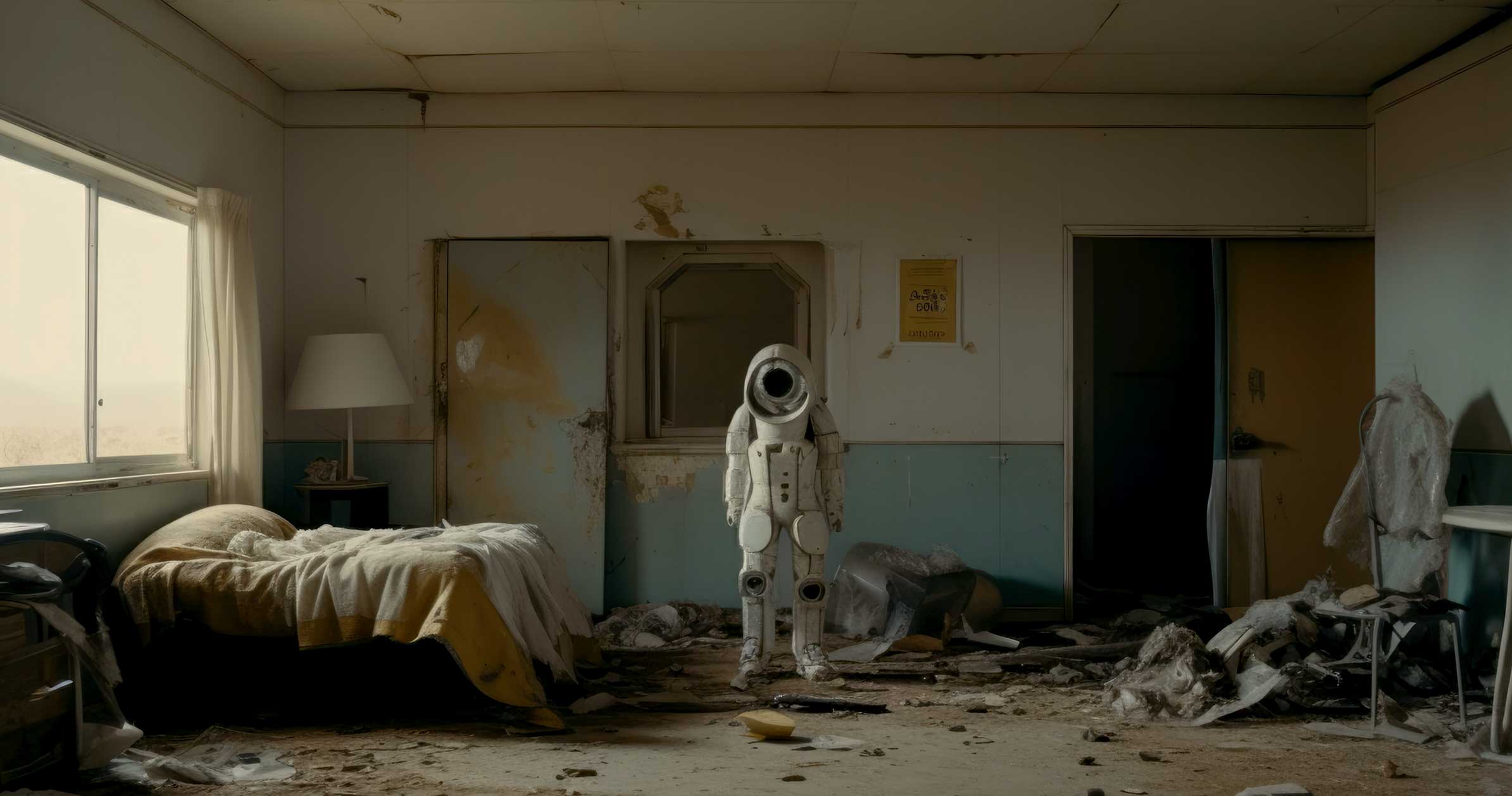
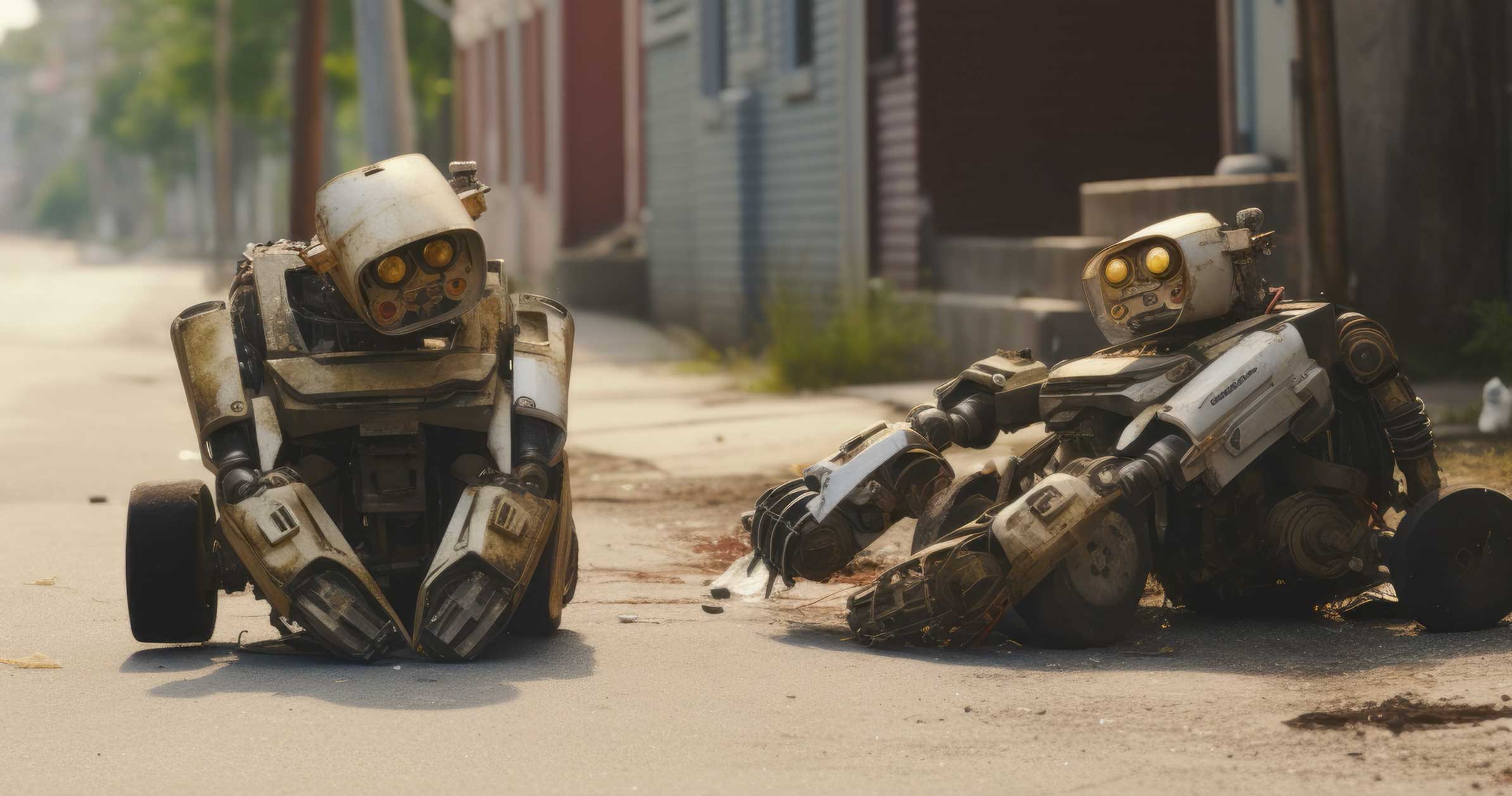
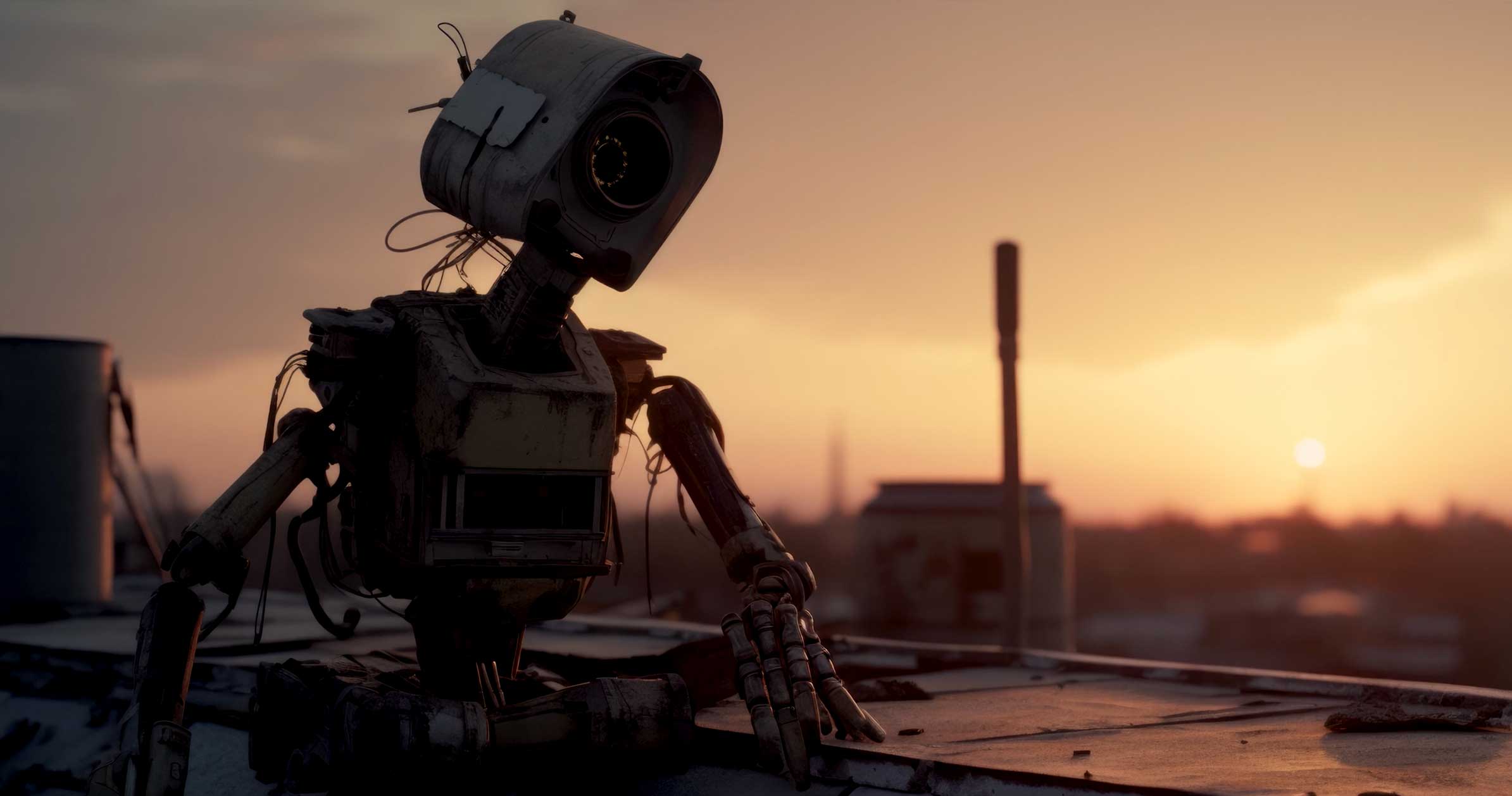
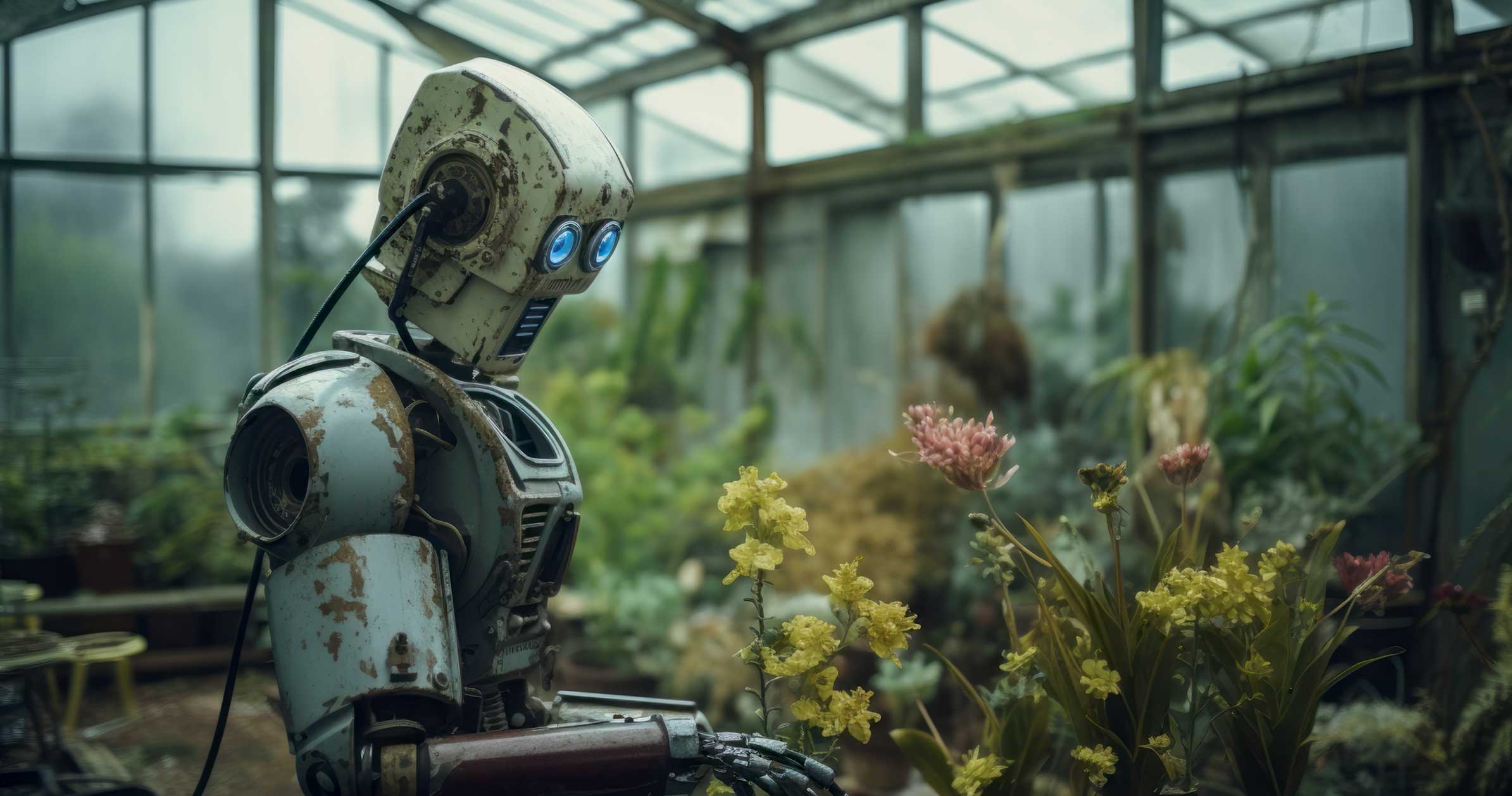
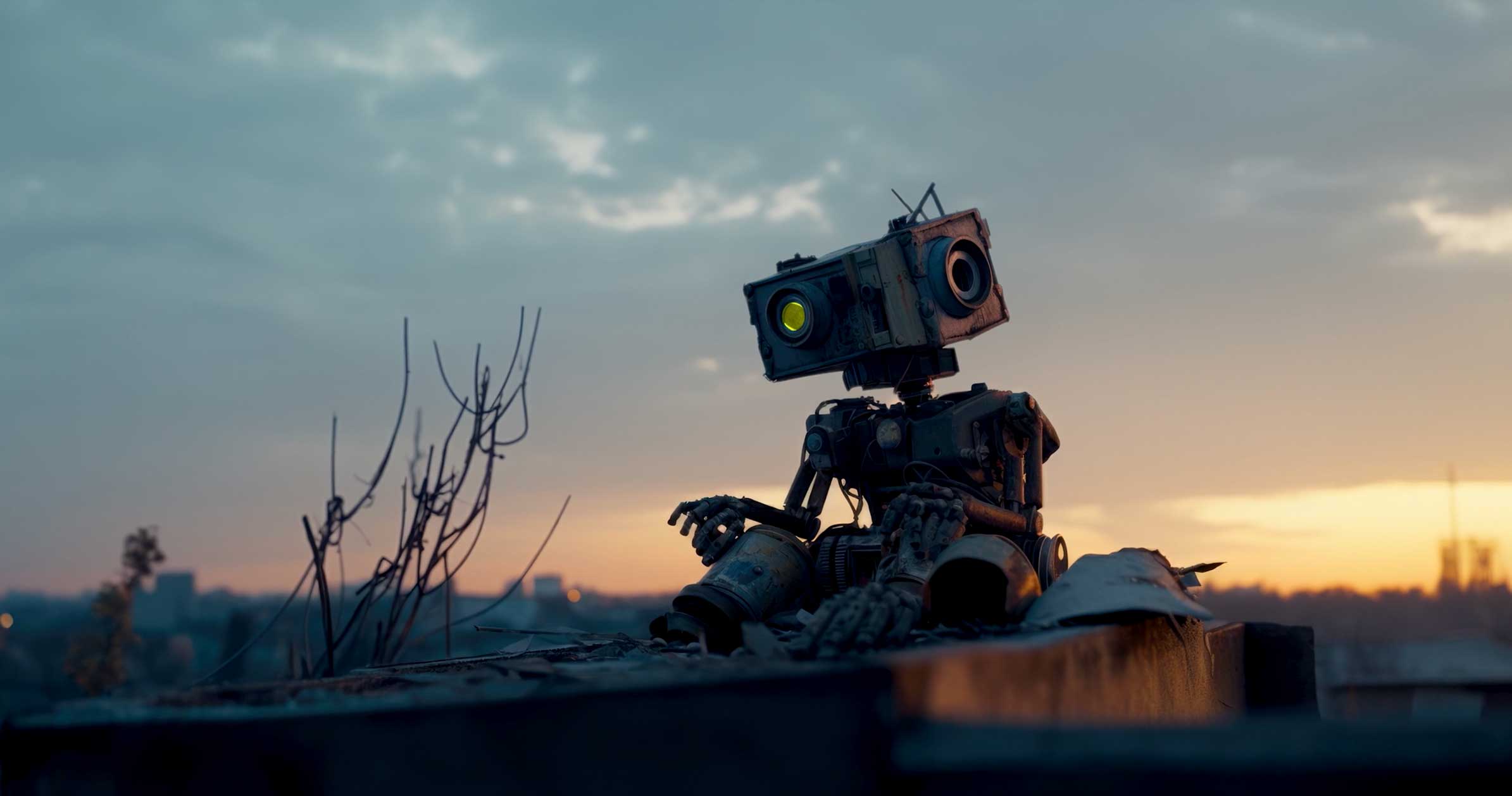
Writer/Director: Aleem Hossain
Poem: “Freedom” by Rabindranath Tagore
VO: Bernard White
